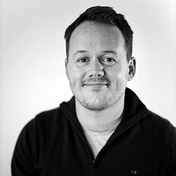Kurt Gödel's Brilliant Madness
Hungarian polymath John von Neumann (1903–1957) once wrote that Kurt Gödel was “absolutely irreplaceable” and “in a class by himself”.
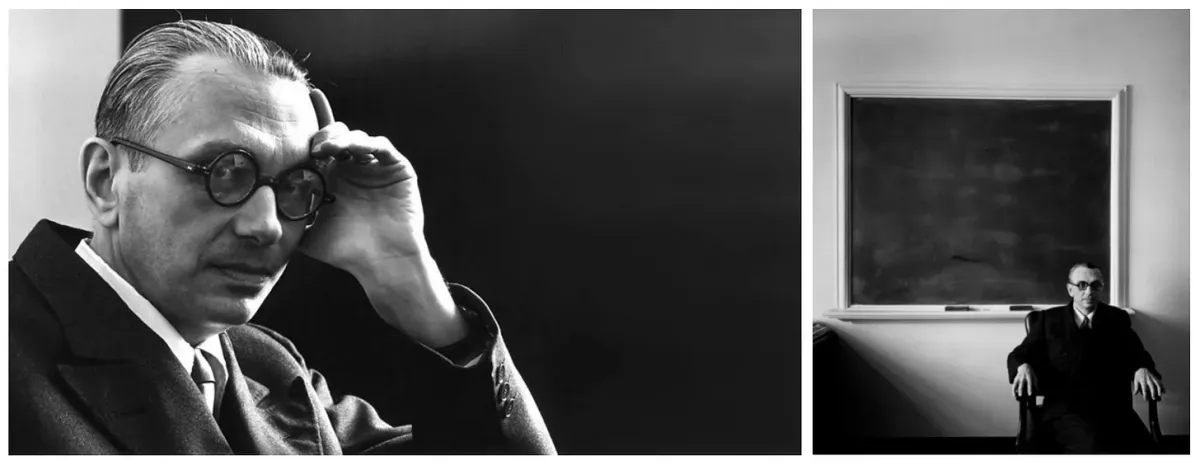
“Modern math’s absolute Prince of Darkness” — David Foster Wallace
Hungarian polymath John von Neumann (1903–1957) once wrote that Kurt Gödel was “absolutely irreplaceable” and “in a class by himself”. Describing his 1931 proof of Gödel’s incompleteness theorem, von Neumann called the achievement
“Singular and monumental — indeed it is more than a monument, it is a landmark which will remain visible far in space and time. The subject of logic will never again be the same.”
von Neumann was not alone in his admiration of Gödel. A young Alan Turing (1912–1954) sought Gödel out in 1936 to inquire about his own monumental reformulation of Gödel’s incompleteness result which showed the limits of proof and computation. Towards the end of his life, Albert Einstein (1879–1955) confided to Oskar Morgenstern (1902–1977) that although his
“Own work no longer meant much, that he came to the Institute merely … to have the privilege of walking home with Gödel”
Indeed, many if not most of the 20th century’s mathematical giants looked up to Kurt Gödel. In 1974, he was awarded the National Medal of Science by President Gerald Ford for (more or less singlehandedly)
“Laying the foundation for today's flourishing study of mathematical logic”
When the time came for the award ceremony, Gödel refused to travel to the White House, fearful that he might contract an illness on the trip. A lifelong hypochondriac, Gödel from a young age developed an obsession with illness and disease, in addition to suffering from iophobia, the fear of being poisoned. For decades, he kept daily records of his body temperature and bowel movements. Convinced that a bout of rheumatic fever in his youth had affected his heart, he would obsessively eat heart medications. According to his friend Morgenstern, by 1974 Gödel was ingesting a wide range of daily medications for ailments he didn’t have, including digestive, bowel and cardiac problems as well as for kidney and bladder infections. For the latter part of his life, he would only eat food that his wife Adele prepared for him. When in 1977 Adele was hospitalized, fearful that his food would be poisoned, he stopped eating altogether and subsequently died of self-starvation. His death certificate reports that he weighed 29 kilograms (65 lbs) at the time of his death, and that it was due to “malnutrition and inanition caused by personality disturbance“.
This week’s newsletter is about Kurt Gödel.
Introduction
Kurt Friedrich Gödel (1906–1978) was born on April 28th in Brünn, Moravia, then part of the Austro-Hungarian empire, now part of the Czech Republic. The son of Rudolf and Marianne Gödel, he had one older brother, Rudolf.
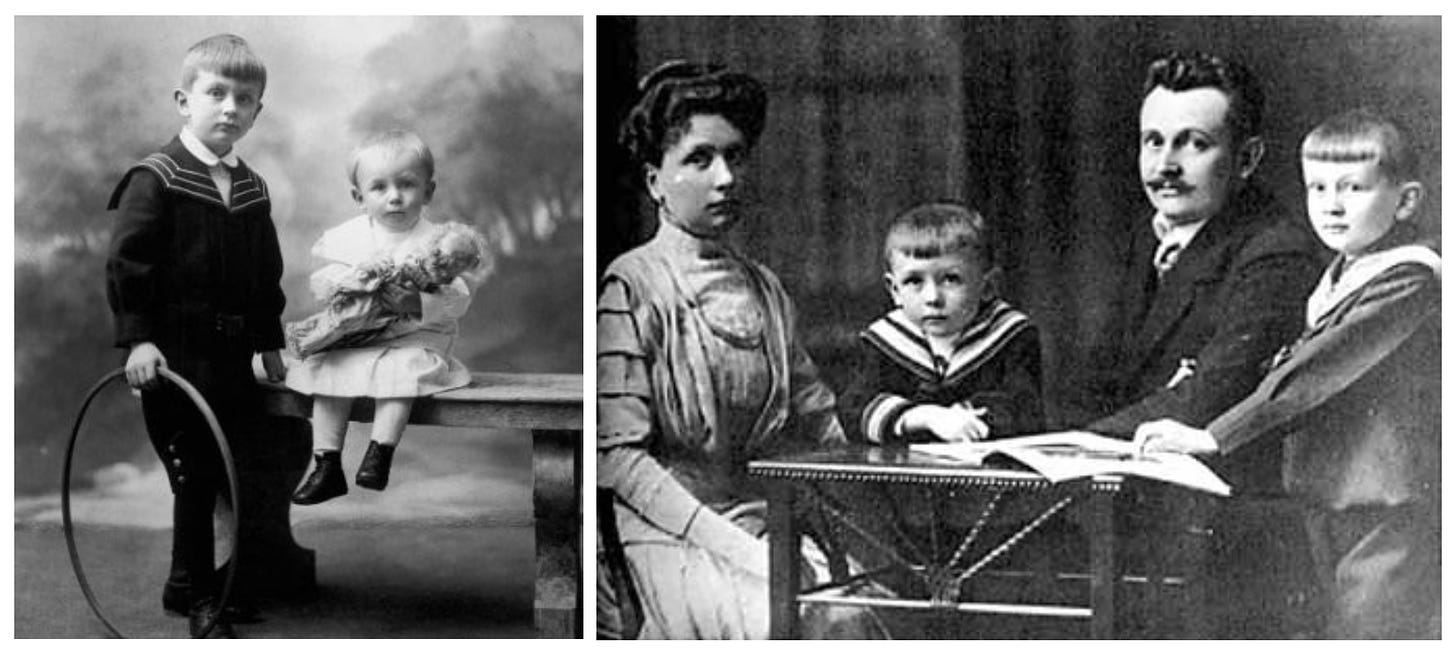
Despite reports to the contrary, Gödel was neither Czech nor Jewish. Although his parents had been born in Brünn, they were very much part of a German community and both Kurt and his brother attended German schools, Gödel enrolling at the Evangelische Privat-Volks- und Bürgerschule in Brünn in 1912. As one of his classmates later described
“Gödel considered himself always Austrian and an exile in Czechoslovakia”
At the time, Czechs in Brünn were mostly non-urbane while Germans were more highly educated and so often financially better off. Identifying as German in other words seems to have been motivated by both cultural and socio-economic factors as much as (or probably even more so) than nationalistic reasons.
Biographers sometimes make note of the fact that Kurt grew up in “carefully sheltered surroundings, in a villa on the southern slope of the Spielberg, [Brünn’s] dominating landmark” (Sigmund, 2017). Meaning, perhaps, that although his formidable years certainly must have been turbulent (World War I breaking out at age 8 and the subsequent breakup of the Austro-Hungarian Empire at age 12), the Gödel family seems to have been largely unaffected the by the war and following economic crisis (Dawson, 1984). Instead, they seem to have lived through the turbulent time well aware of the risks and uncertainties surrounding them, which ultimately never came to bear. This likely had an effect on the curious child whose nickname was Herr Warum (“Mr. Why?”) and who, from a young age worried and thought excessively about illness, disease and death.
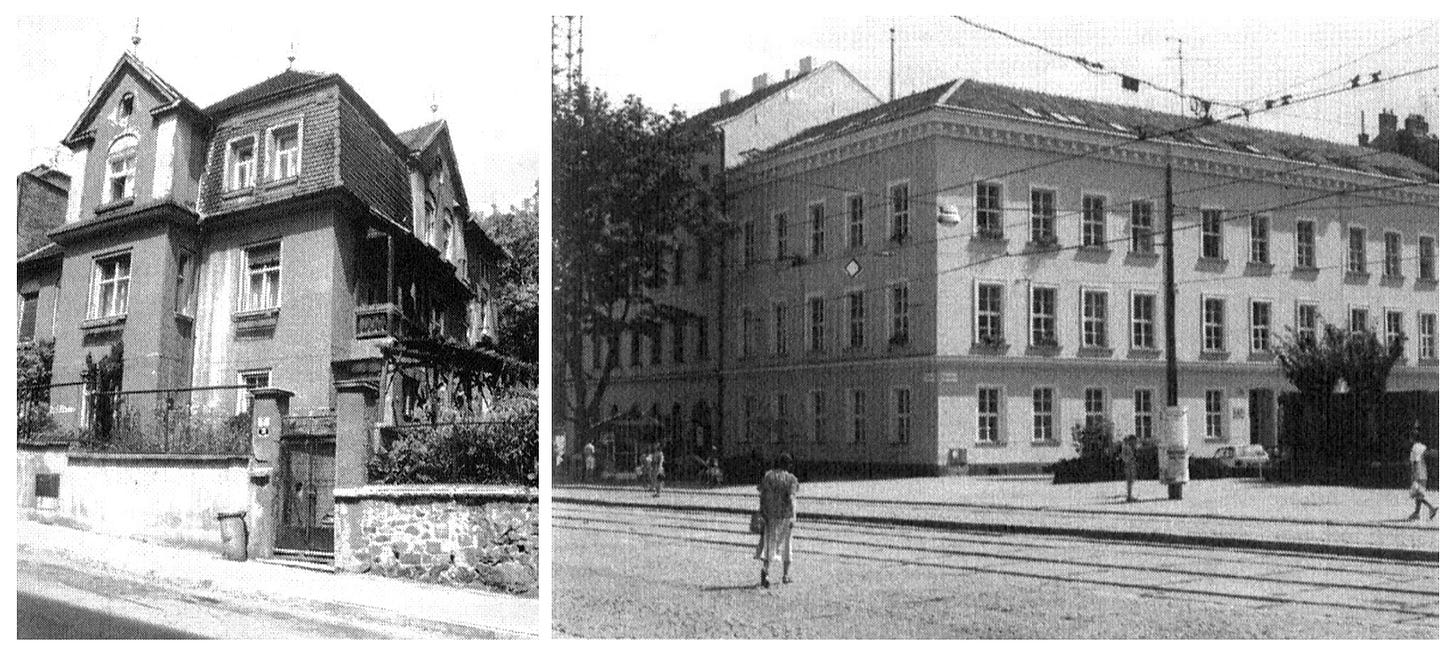
As a boy Gödel excelled in school, earning only the highest marks in mathematics, languages and religion as well as high marks in every other subject. This despite rather frequent “excused absences” (Dawson, 1984) from participation in physical education. As early as age four, Gödel began suffering from “frequent episodes of poor health” which would persist for the rest of his life. Famously when he was six or seven — according to his older brother Rudolf— Kurt contracted rheumatic fever which Rudolf believes may have been the impetus for his lifelong obsession with illness and disease.
Gödel’s family moved to Vienna in 1923 as he, alongside his older brother, was set to enter the University of Vienna in 1924. Among his professors there were Philip Furtwängler (1869–1940), his later mentor Hans Hahn (1879–1934), Wilhelm Wirtinger (1865–1945), future close friend Karl Menger (1902–1985), Einstein’s later assistant Walter Mayer (1887–1948), Josef Lense (1890–1985), Eduard Helly (1884–1943) and Leopold Vietoris (1891–2002), among others. Although initially enrolling to study theoretical physics, Gödel switched his focus to mathematics in 1926. Indeed, he had already mastered university-level mathematics before entering university, at age 18 (Dawson, 1998). As his fellow student Olga Taussky-Todd (1906–1995) later wrote, “during our student years it slowly became obvious that Gödel would stick with logic, that he was to be Hahn’s student and not Schlick’s, and that he was incredibly talented”.
“He was a rather silent man, but he offered his help whenever it was needed” — Olga Taussky-Todd
A fellow student, Taussky-Todd describes inviting Gödel to tea parties which he “appeared to enjoy, despite not contributing to the conversation”. Karl Menger later described Gödel similarly, stating that “He was a slim, unusually quiet young man” (Sigmund, 2017).
When it came time for Gödel to write his Ph.D. dissertation, as Taussky-Todd mentioned, Hans Hahn became his supervisor. Hahn was also the person who encouraged Gödel to participate in meetings of the Vienna Circle in 1926. Although Gödel disagreed with their views, he enjoyed being part of the Viennese cultural milieu of the 1920s, whose members included Moritz Schlick (1882–1936), Richard von Mises (1883–1953), Menger and Hahn, in addition to Morgenstern, Ludwig Wittgenstein (1889–1951) and Karl Popper (1902–1994), among others. Gödel submitted his doctoral dissertation in the fall of 1929 at the outset of the Great Depression and following the premature death of his father at age 55. His dissertation in mathematical logic is entitled:
- Gödel, K. (1929). Über die Vollständigkeit des Logikkalküls (“On the Completeness of the Calculus of Logic”).
Gödel’s doctorate was conferred by the University of Vienna on February 6th, 1930. Following his graduation, in an attempt to “interpret analysis within arithmetics”, as he later wrote he came to realize that “the concept of provability [itself] could be defined arithmetically” leading him to the discovery of his first incompleteness proof, presented at the Second Conference on the Epistemology of the Exact Sciences held in Köningsberg from the 5-7th of September 1930. As recounted in Copeland et al. (2015):
"At a mathematical conference preceding Hilbert's address, a quiet, obscure young man, Kurt Gödel, only a year beyond his PhD, announced a result which would forever change the foundations of mathematics. He formalized the liar paradox, "This statement is false" to prove roughly that for any effectively axiomatized consistent extension T of number theory (Peano arithmetic) there is a sentence σ which asserts its own unprovability in T.
John von Neumann, who was in the audience immediately understood the importance of Gödel's incompleteness theorem. He was at the conference representing Hilbert's proof theory program and recognized that Hilbert's program was over.
In the next few weeks von Neumann realized that by arithmetizing the proof of Gödel's first theorem, one could prove an even better one, that no such formal system T could prove its own consistency. A few weeks later he brought his proof to Gödel, who thanked him and informed him politely that he had already submitted the second incompleteness theorem for publication."
- Excerpt, Computability. Turing, Gödel, Church and Beyond* by Copeland et al. (2015)
His revolutionary incompleteness theorems were later published in the 1931 paper:
- Gödel, K. (1931).Über formal unentscheidbare Sätze der Principia Mathematica und verwandter Systeme(“On Formally Undecidable Propositions of Principia Mathematica and Related Systems”). Monatshefte für Mathematik, 1931.
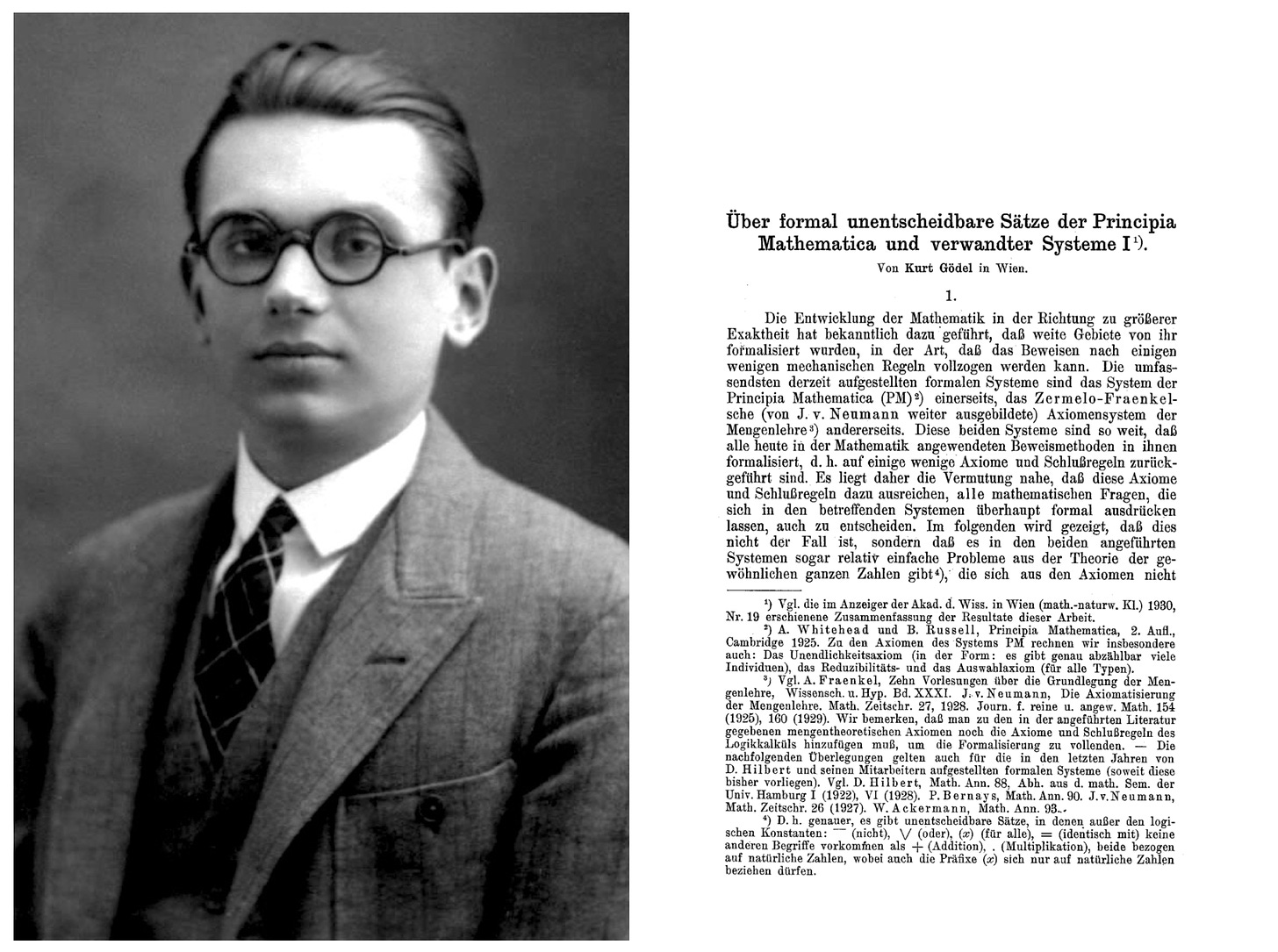
Gödel went on to earn his habilitation at the University of Vienna in 1932 and became a Privatdozent there in 1933.
Around the same time the President of Germany, Paul von Hindenburg, reluctantly appointed Nazi leader Adolf Hitler as the new Chancellor of Germany. After only two months in office, following the burning of the Reichstag building, the German parliament passed the "Enabling Act" giving the chancellor full legislative power for a period of four years. Following the death of von Hindenburg the next year, Hitler used the act to merge the offices of Chancellor and President, creating the new office of "Führer and Reichskanzler".
The ensuing enactment of laws and decrees, withdrawal of doctorates and burning of books thought to be promoting “Jewish intellectualism” is bound to have had an effect on Gödel, who not long after becoming a Privatdozent in Vienna accepted an invitation to lecture at the Institute for Advanced Study (IAS) in Princeton, in what would be his first trip to America.
According to John W. Dawson (1944-)’s extensive investigations of Gödel’s Nachlaß (posthumously assembled collection of books and paper) Gödel appears to have visited the United States on three different occasions prior to his emigrating there in 1940.
First visit to America (1933–34)
On February 14th, 1933 von Neumann wrote the following letter to Gödel from Budapest (Rédei, 2005):
Dear Mr. Gödel,
I just returned to Europe from Princeton, and I would be very glad if during my European stay there would be an opportunity to meet you. At the end of September I will go back to Princeton, where in the future I will spend two terms per year, as I received an offer from the new Bamberger-Flexner "Institute for Advanced Study", and I accepted.
Perhaps you would like to know more than you have gathered from the brief correspondence up to now about the conditions in Princeton and about the structure of this new Institute, of which you will fortunately be a member next year. Therefore, I write to you first of all, and also on Veblen's request, to tell you that I am happy to provide you with any information you may be interested in.
Perhaps we can also meet sometime and somewhere--this summer I will probably still lecture in Berlin (for the last time), and I will repeatedly be in or travel through Vienna. What is your program?
With best regards, which I ask you to extend also to Menger and Hahn,
Yours sincerely, Johann von Neumann
The first term at the Institute for Advanced Study (IAS) was set to start on October 1st. Gödel had planned to be present for the opening, stating to Oswald Veblen (1880–1960) on September 18th that he would arrive in New York on the 29th. However, as Taussky-Todd (1987) writes, Gödel had been “taken ill before reaching his boat”, assessed his temperature and instead decided to return home. About two weeks later, “persuaded by his family” he tried again, radioing to Veblen that his departure had been “postponed due to illness” to the 30th of September (Dawson, 2006).
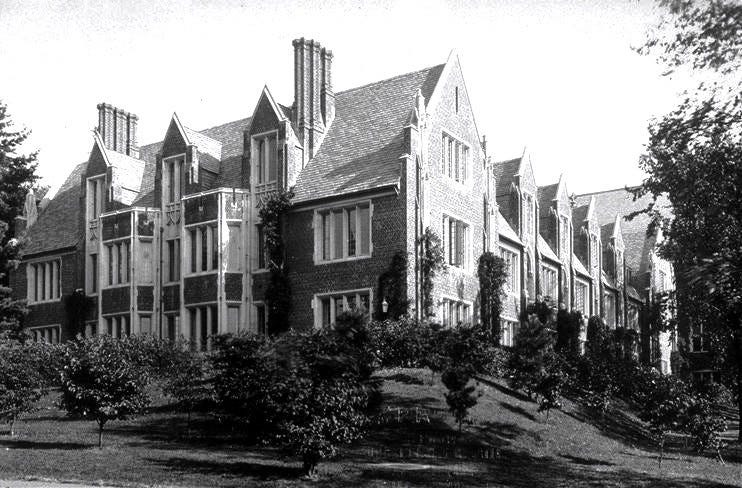
Gödel’s first visit lasted from his arrival in New York on the 6th of October 1933 until May of 1934. He stayed in a house at 32 Vandeventer Avenue. During his visit, he socialized with various IAS and Princeton faculty, including extensively with Veblen and his wife Elizabeth M.D. Richardson. The latter later described being concerned about Gödel’s diet, even at times preparing meals for him “because she found that, unaccustomed to the early closing times of Princeton’s restaurants, he would often become so involved with his work that he missed dinner” (Dawson, 2006).
First Mental Breakdown (1934–35)
Gödel likely suffered his first serious mental breakdown in 1934, after returning home from the IAS. He had boarded the Italian liner SS Rex from New York City on May 26th. The eight-day journey ended in Genoa in the Northern part of then-Fascist Italy. Before returning home, he travelled to Venice for a three-day vacation. Back in Vienna, as Dawson (2006) writes, the “university, city and country […] was in a profound crisis”.
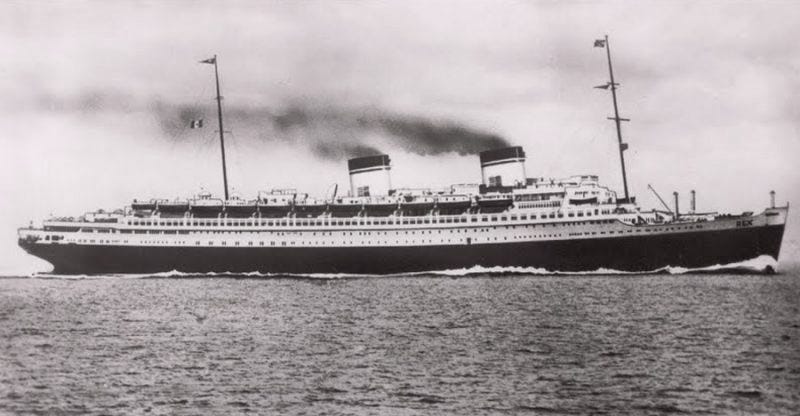
Following the Great Depression, a governmental crisis in 1932 had given way for a conservative politician named Engelbert Dollfuss (1892–1934) to ascend to power in Austria. In early 1933 responding to Hitler's own ascension to Chancellor of Germany, Dollfuss shut down the Austrian parliament and assumed dictatorial power. The next February a brief Austrian Civil War--sometimes known as the February Uprising--took place when austrofascists loyal to Dollfuss skirmished with socialist forces. By July, taking advantage of the unstable situation, Austrian Nazis loyal to Hitler had stormed the Chancellery in a failed coup and assassinated Dollfuss.
In response, the head of the Italian fascist party Benito Mussolini mobilized part of the Italian army on the Austrian border, threatening Hitler with war in the event of a German invasion of Austria. With Mussolini's approval, Dollfuss was soon succeeded by Kurt Schuschnigg (1897–1977) who restored stability in Austria.
Although the situation in Austria would eventually stabilize, 1934 would prove to be an especially tumultuous year for Gödel nonetheless. Before he succeeded Dollfuss as head of the austrofascists, Kurt Schuschnigg served as minister of education, and on the 8th of July decreed that “elected rectors and deans of the universities would be recognized by the government ‘only if they joined the Fatherland Front’”, the party of the fascists. Simultaneously, Gödel learned that his mentor and former doctoral advisor Hahn was scheduled to undergo emergency surgery for cancer. Hahn died during the surgery at the age of 55 years old, on July 24th. As Schuschnigg ascended to power, the “propaganda and pressure, fear and suspicion, irresolution and incipient emigration” (Dawson, 2006) lead to the disintegration of Vienna’s intellectual and cultural milieu, which had played a large part in Gödel’s early life. In Austria’s universities, “the radical nationalistic majority ruled in the faculty as well as in the student body” (Menger, 1981).
According to his own account in a letter to Oswald Veblen in 1935, Gödel’s troubles in 1934 began with “an inflammation of the jawbone from a bad tooth” which left him feeling “wretched for a long time” (Dawson, 2006). The incident lead to a significant weight-loss, which, as he wrote to Veblen, compounded Gödel’s “usual indigestion”. In his memoirs, Menger describes a changed Gödel, writing
Gödel was more withdrawn after his return from America than before; but he still spoke with visitors to the Colloquium, [...] especially with Wald and Tarski [...]. To all members of the Colloquium Gödel was generous with opinions and advice in mathematical and logical questions. He consistently perceived problematic points quickly and thoroughly and made replies with greatest precision in a minimum of words, often opening up novel aspects for the inquirer. He expressed all this as if it were completely a matter of course, but often with a certain shyness whose charm awoke warm personal feelings for him in many a listener.
- Excerpt, Recollections of Kurt Gödel by Karl Menger (1981)
What Gödel fails to mention in his letter to Veblen is the fact that he spent the week from the 13-20th of October at the Sanatorium Purkersdorf in Wien-Umgebung, Lower Austria. As Dawson writes, “part spa, part clinic, part rest home, with facilities for diet and rehabilitation therapy” Sanatorium Purkersdorf was an establishment for the well-to-do. Not a mental institution in the modern sense, it provided a peaceful atmosphere suited for those seeking recovery from distress.
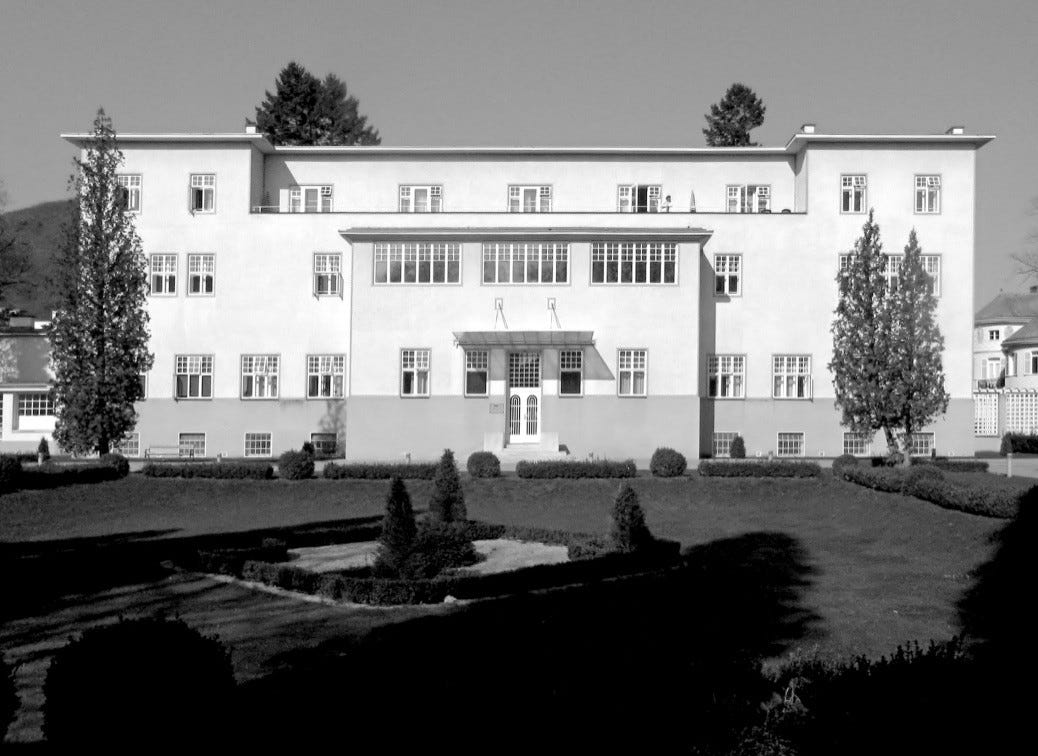
While there, Gödel was evaluated by (the later controversial) Julius Wagner-Jauregg (1857–1940), the first psychiatrist to be awarded the Nobel Prize in Medicine (1927) for his “discovery of the therapeutic value of malaria inoculation in the treatment of dementia paralytica”. Officially retired in 1928, Wagner-Jauregg came to evaluate that Gödel had suffered from a “nervous breakdown brought on by overwork” (Dawson, 2006), from which he was expected to soon recover. As he wrote to Veblen in January 1935, Gödel “felt much better”, albeit still feeling “somewhat sensitive” and so “feared that a stormy crossing or … sudden change in conditions might bring about a relapse”. Hence, he again postponed his plans to return to Princeton, this time from the spring semester of 1934–35 until the fall.
By autumn, Gödel was again lecturing and so seemingly back to normal, writing to Flexner at the IAS in August that he had been in his “normal state of health for some months” and so was “looking forward with pleasure to being in Princeton for the next term” (Dawson, 2006).
Second visit to America (1935)
Gödel again departed Europe for America on a ship sailing from Le Havre in Northwestern France on the 20th of September 1935 alongside physicist Wolfgang Pauli (1900–1958) and mathematician Paul Bernays (1888–1977). Upon his arrival in Princeton, Gödel again found local lodgings, this time in a house on 22 Madison Street.
Although he had planned to stay for the duration of the fall semester, seemingly still feeling ill, by November 17th Gödel had notified Flexner that he again “felt compelled to resign for reasons of health”, described by Dawson (2006) as “a recurrence of depression”. Flexner responded that he “was under the impression that your health had greatly improved, for you certainly look much better than when you came to Princeton two years ago”. The two met to discuss the matter a few days later, and Veblen accompanied Gödel to an appointment with a physician in Princeton a few days after that. Despite only having arrived in Princeton about seven weeks prior, Gödel again left Princeton for Vienna on November the 30th. Before leaving, Flexner expressed his hopes that Gödel would make “a complete and prompt recovery” so that he would soon be able to resume his “important scientific activities”. Veblen too, communicated to Gödel that “the professors in the Institute ha[d] already agreed” to invite him back when he recovered. Veblen drove him to the NYC dock where his ship set out and promised not to alarm Gödel’s family of his condition before he himself had a chance to speak with them.
Oswald Veblen appears to have been fairly distressed by what he had seen and heard from Gödel during his brief 1935 stay. So much so in fact, that three days after taking him to the New York City harbour he communicated to Gödel that he “dared not risk” not alerting Gödel’s brother Rudolf of his state before he arrived in Le Havre, should “some accident befall you on the way without any of your friends on either side of the Atlantic [learning of it] for several days of […] weeks”. Veblen did so on December 7th.
As Gödel arrived in France, he made his way to Paris, where he “in a state of distress” telephoned his brother to inquire whether he would travel to Paris to escort him back to Vienna. As he waited for Rudolf to arrive, Gödel however eventually changed his mind, found that his condition had stabilized, and so boarded a train to Vienna alone on the 11th of December 1935. Regarding his condition at the time, Menger later wrote Veblen that he had seen Gödel twice since he returned, noting
“It’s too bad, that he overworked himself to a degree that he needed soporific things, but perhaps still worse that he actually starting easing [up on] them. But I think that after a few weeks of complete rest the depression will be gone”
Around the same time, Menger himself was inquiring to Veblen about coming to stay at the IAS. In a letter written sometime in December 1935 Menger describes his inability to concentrate amid the political chaos in Austria, writing that “you simply cannot […] find the concentration necessary for research if you read twice a day [about] things […] which touch the basis of the civilization of your country as well as your personal existence”. He further cites the “general political atmosphere, whose tensions and impending dangers” exerted an increasing strain on “the nerves” which had by then become “unsupportable” (Dawson, 2006).
Second Mental Breakdown (1936)
Gödel himself would later call 1936 “one of the three worst years of my life”. Back in Vienna, his condition did not subside, but rather continued to worsen. He again spent time in a sanatorium, this time for several months at an institution called Sanatorium Rekainkel just west of Vienna.
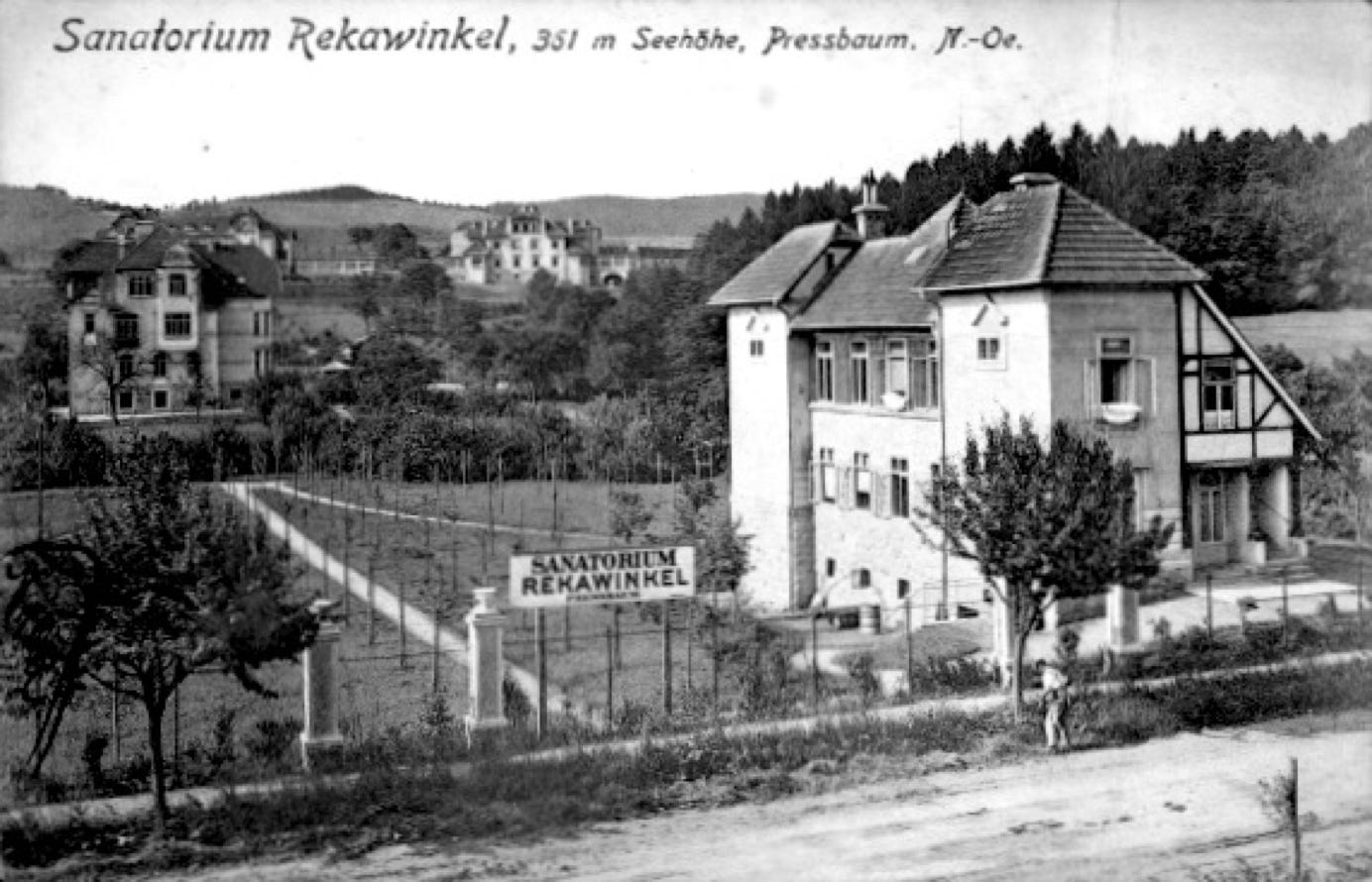
On June 22nd, Gödel’s former professor, Moritz Schlick (1882–1936) was brutally murdered by a schizophrenic former student, Johann Nelböck (1903–1954). Nelböck confronted Schlick at the steps of the university when he was about to give a lecture and shot with him with a pistol. Shortly after the assassination, receipts found in Gödel’s Nachlaß by Dawson show that he again committed himself to an institution, this time in Golling, Salzburg . Receipts also show him staying at hotels in Aflenz in October and at the Hotel Drei Raben in Graz, where he tried to buy a handbook on toxicology and a treatise on intoxication. His library slips from the period show him reading extensively on related subjects, including pharmacology, normal and pathological physiology, psychiatry, neurology and laws pertaining to mental illness (Dawson, 2006).
As many biographers have since surmised, Gödel’s mental problems seem to have begun as hypochondria. He would obsess over his diet and bowel habits and kept a daily record for two decades or more of his body temperature and consumption of the laxative magnesium hydroxide. Additionally, he had a strong fear of accidental and, in later years, deliberate poisoning. His brother Rudolph conjectured that the fear, known as iophobia, may have originated from growing up in apartments in Vienna heated by coal and coke where accidental carbon monoxide poisonings were not uncommon. However irrational, the phobia nevertheless led him to avoid eating foods he deemed unsafe, causing malnourishment which likely also affected his mood. All the while, as Veblen’s wife and his friend Karl Menger attested, he would overwork himself to the point of exhaustion, exacerbating his stress and anxiety.
By the spring of 1937, following multiple stays in various institutions and hotels, Gödel considered himself sufficiently well to again begin lecturing, offering a course on axiomatic set theory at the University of Vienna. Following two postponements to due illness, the course was held in May of 1937. To express his delight of the news that Gödel was recovered and lecturing, John von Neumann wrote him from Budapest on July 13th, suggesting Gödel come back to the IAS for the year 1938–39 and inviting him to publish his newly formulated paper on the axiom of choice in the Annals of Mathematics. By September, Karl Menger too had invited Gödel to America, suggesting he join him at Norte Dame for the upcoming winter and spring.
Sometime around 1937, Gödel engaged in a romantic relationship with Adele Thusnelda Porkert (1899–1981), whom he had known for more than ten years. Adele had briefly been married before, in 1928 to a man named Xy Nimbursky but their relationship only lasted for about a year. When her and Gödel met, she was working as a receptionist and dancer in a cabaret. As she was six years his senior and divorced, Gödel’s mother disapproved of the relationship. Nonetheless, the two married on September 20th 1938. Speculating about the importance of Adele in Gödel’s life, Oskar Morgenstern later recalled Adele telling him how in the 1930s, she had fed him, “spoonful by spoonful”, until she had brought his weight up from “forty-eight kilograms to sixty-four”. A “strong-willed Viennese waasherwoman type” Adele would indeed, alongside von Neumann, Einstein, Veblen and Morgenstern for the rest of Gödel’s life serve as one of his “protectors” who looked after him (Dawson, 2006).
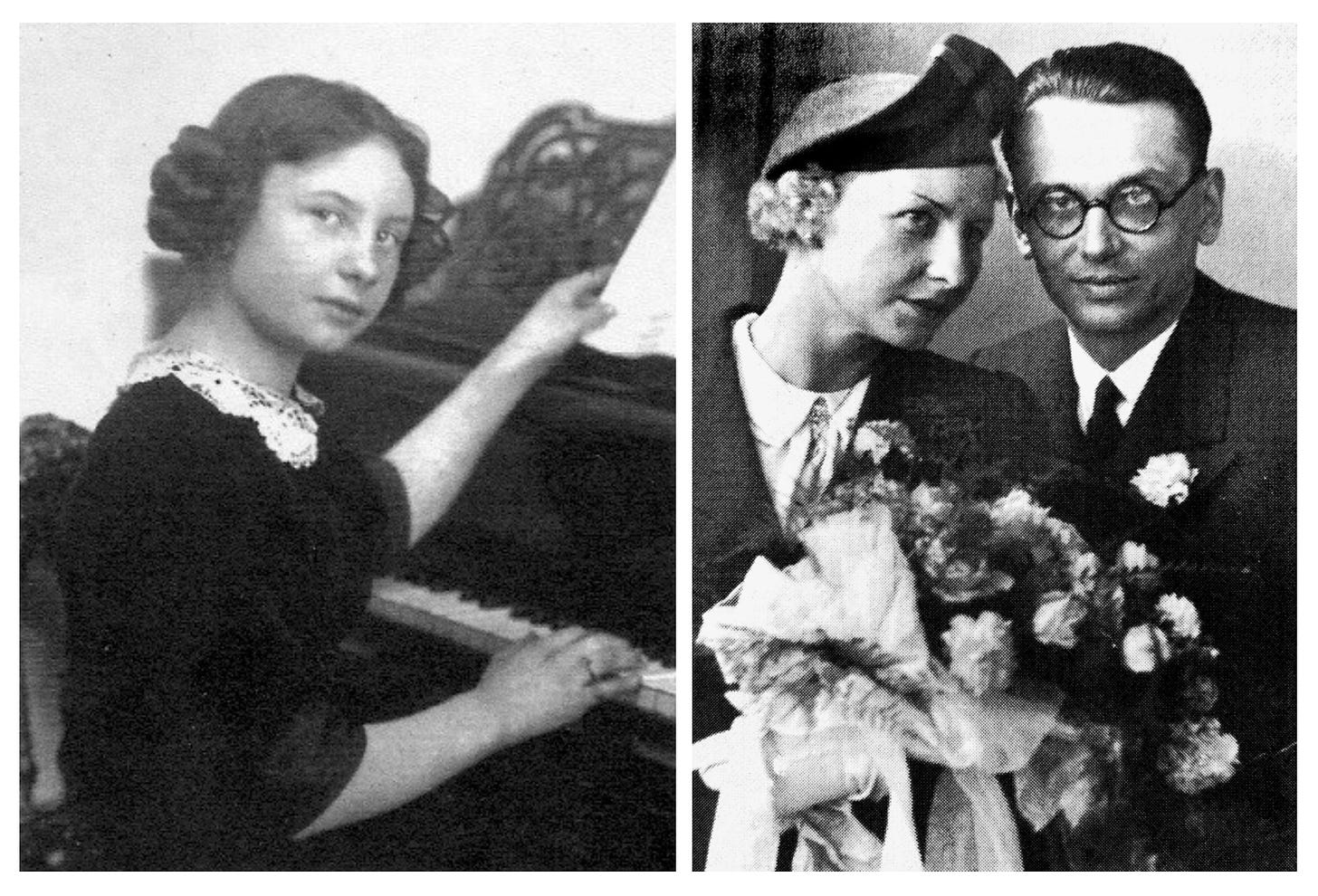
Briefly visiting Europe in January of 1938, von Neumann arranged to meet Gödel to discuss his returning to the IAS before heading back to America. The two met at Hotel Sacher in Vienna on the 23rd of January. At the time, Gödel was working on the consistency of the axiom of choice and Georg Cantor (1845–1918)’s famous continuum hypothesis, topics very close to von Neumann’s early expertise and interests. Gödel was able to show that the negation of the continuum hypothesis (i.e. the existence of a set with intermediate cardinality) could not be proved in standard set theory, a huge breakthrough with considerable consequences for set theory and mathematics in general.
At the time, pressure from pro-unification activists had forced the Austrian chancellor Schuschnigg to announce that there would be a referendum on the 13th of March on a possible union with Nazi Germany. Hitler portrayed the vote as an "obfuscation of the popular will in Austria and Germany" and threatened invasion. Under the pressure, Schuschnigg cancelled the referendum. Unopposed by the Austrian military, on March 12th the German Wehrmacht marched into Austria in what is now known as the "Anschluss", the annexation of Austria into Nazi Germany.
As Dawson (2006) writes, “it would be interesting to know what, if anything, Gödel had to say about that event, or what immediate effect it had on his life or work, but, incredibly, there is no mention of the Nazi takeover in any of Gödel’s correspondence.“ Still in Vienna, it appears Gödel devoted the winter and spring semester of 1938 to the preparation of the manuscript which would be published as the monograph
- Gödel, K. (1940). The Consistency of the Continuum-Hypothesis. Princeton University Press.
Third visit to America (1938–39)
Gödel married Adele on the 20th of September. Two weeks later, in early October 1938 he once again set sail for America, this time travelling on the ship New York which set out from Cuxhaven, Germany on October 6th. He arrived in New York on the 15th. Adele remained behind in their apartment in Vienna. Lodging at a local motel called the Peacock Inn, Gödel assumed his work immediately upon arriving in Princeton. In late October he attended a regional meeting of the American Mathematical Society (AMS), where he also met with Menger to discuss visiting him at Notre Dame for the spring semester. On the 9th of November, the announcement of Gödel’s consistency result was sent to the Proceedings of the National Academy of Sciences. Starting around the same time, Gödel began lecturing on his set-theoretic work regarding the consistency of the continuum hypothesis and the axiom of choice. For the spring quarter, he stayed at the University of Norte Dame, in Indiana. The spring term began in February, and Gödel lived on campus, as recounted by a graduate student who later wrote that “Gödel spent [the] semester brooding in the Lyons Hall [dormitory annex]”. Of his health, Menger at one point stated that he appeared “healthy but not particularly happy”, although later writing to Veblen that “Gödel became ill with a bad flu, which kept him in bed for more than a week, in his room for another, and very weak for a third”. Gödel boarded the Bremen on June 14th 1939 for his return to Europe and the long-awaited reunion with his wife Adele.
Shortly after arriving in Austria, Gödel received notice to report for a physical examination to determine his fitness for Nazi military service. Following a week of vacation in Baden with Adele, Gödel wrote von Neumann explaining that “There is not much new with me; recently I had to attend to a lot of things with the authorities. I hope to be in Princeton again by the end of September”.
War (1939)
The German invasion of Poland began on the 1st of September 1939, the day after the Supreme Soviet of the Soviet Union approved the Molotov-Ribbentrop Pact. The United Kingdom, France and their empires responded by declaring war on Nazi Germany.
Gödel was in Vienna when World War II broke out, awaiting his medical examination for military service. As he later recounted to Veblen, “When I came back to Germany I expected that I would be sent back for good by the military authorities” due to his history of mental instability. However, following his examination, he was instead found to be “fit for garrison duty” and in mid-September was awaiting induction into the military.
Emigration to America (1939–40)
In the turbulent decade that was the 1930s, Gödel had not managed to lecture enough to be able to renew his Lehrbefugnis, the license that enabled him to make money at the University of Vienna. At the same time, awaiting his summons for military duty, he was also unlikely to be allowed to leave the country. He communicated this difficulty to von Neumann and Flexner, who did their best to help him obtain a U.S. visa, which would enable the German military authorities to release him (Dawson, 2006). Writing to Flexner on September 27th, von Neumann makes Gödel’s case on his behalf (Rédei, 2005):
Dear Doctor Flexner,
I am returning enclosed Gödel's wire [...] Under these conditions the situation is considerably better than we originally expected it to be. While it would have been difficult, if not impossible, to intercede with the German authorities, there should be a way to persuade the American consul in Vienna to grant a visa.
As far as I can make out from Gödel's statements and from other cases of similar nature, his difficulty is this: professors' visas are granted only to applicants who go into teaching or research positions in this country and who have had such positions previously for two years in the country they come from. The objection made against Gödel - and against some other refugees - is that the two years teaching in the country of origin have to be immediately preceding their application; whereas Gödel was suspended from his position by the Nazis after the "Anschluss" in 1938.
[...]
von Neumann continues, arguing that Gödel’s teaching experience is more than sufficient to quality for a professor’s visa and inquiring to Flexner (who had made a name for himself as a reformer of higher education in 1908):
“Couldn't you find it possible to intercede with the State Department in this sense?”
von Neumann lists five arguments to be made on Gödel’s behalf. The most interesting is his second, which is included in its entirety below:
“The claim may be made with perfect justification that Gödel is unreplaceable for our educational program. Indeed Gödel is absolutely irreplaceable; he is the only mathematician alive about whom I would dare make this statement.
He represents a very important branch of mathematics, formal logics, in which he outranks everybody else to a much higher degree than usually happens in any other branch of mathematics.
Indeed, the entire modern development of formal logics concerning "undecidable questions", the solution of the famous "continuum hypothesis", and quite unexpected connections between this field and other parts of mathematics, are entirely his individual contribution.
Besides, the ouvre of his scientific achievements is obviously still in steep ascent, and more is to be expected from him in the future.”
von Neumann finishes the point by stating:
“I am convinced that salvaging him from the wreck of Europe is one of the great single contributions anyone could make.”
By the end of November, Flexner’s overtures and pleas to the U.S. State Department appeared to have reached their conclusion. Avra M. Warren, Head of the Visa Division notified Flexner’s successor at the IAS, Frank Aydelotte (1880–1956), that the American consular officer at Vienna had reviewed Gödel’s case and that it had “been approved upon preliminary examination as that of an applicant apparently entitled to non-quota status”. Meaning, Gödel would be except from the formal quota of immigrants from “non-Western” nations. However, as the consul noted, “although Gödel had been invited to file a […] formal application for a visa”, he had not yet done so, likely because he believed he would not be allowed to leave Germany, “although he apparently has not [yet ] endeavoured to obtain such permission” (Dawson, 2006).
According to Gödel himself, having been deemed fit for garrison duty and losing his license to teach, he had by November of 1939 resigned himself to staying in Vienna. Crossed-out sections in letters show him stating to Veblen that “I am beginning now to look for a position here (perhaps in the industry) since my savings are not sufficient to live on for a longer period of time.” Despite its new Nazi rule, Vienna very likely continued to be attractive to Gödel, and he and Adele were both reluctant to forsake their families. What likely changed his mind was the following incident, as described in Dawson (2006):
While walking with Adele one day in the vicinity of the university, Gödel was assaulted by a band of young Nazi rowdies. For whatever reason — whether he was mistaken for a Jew, recognized as one who had fraternized with Jewish colleagues, or was simply targeted as an intellectual — the youths seized him, struck him, and knocked off his glasses before Adele managed to drive them off with blows from her umbrella.
Although he was not injured, the incident frightened Gödel to immediately take action towards emigration. On the 19th of December, having travelled to Berlin, he obtained German exit visas for himself and Adele, valid for a single departure until April 30th 1940. Their American immigration visas were issued on the 8th of January. Gödel and Adele left Germany a week later, on the 16th. “The only complication which remains”, he wrote to Aydelotte on January 5th, “is that I shall have to take the route through Russia and Japan. The German certificate of leave makes explicitly this requirement”. The two travelled through Lithuania and Latvia to Moscow before boarding the trans-Siberian express. They arrived in Yokohama on the 2nd of February, and departed on the President Cleveland on the 20th, arriving in San Francisco on March 4th. From there, they rode the transcontinental rail for about a week before arriving in Princeton. The journey, in other words, took just under two months.
Life in Princeton
“Gödel did some of his best work […] at a time when he was less normal than now.” —John von Neumann (1945)
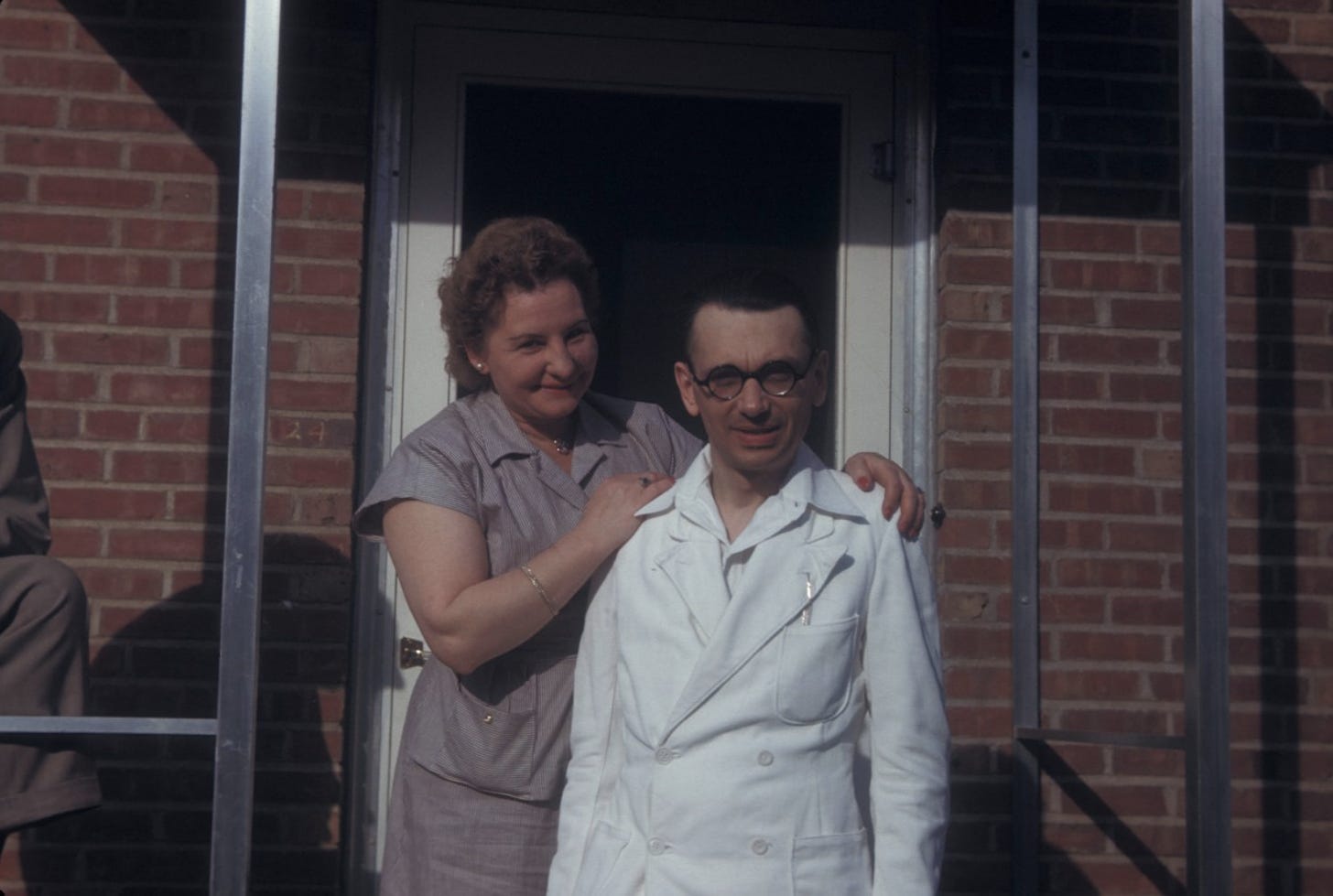
Back in Princeton for his fourth visit, Gödel and Adele moved into an apartment at 245 Nassau Street. Although at last safe from the war raging in his home country, Gödel still carried with himself the anxiety and worries that had plagued him during his previous visits to the Institute. Following a vacation in Maine in 1941, Gödel insisted that he and Adele move to escape the “bad air from the central heating”, for instance. Not long after, Morgenstern in his own notes complained that Gödel repeatedly brought up the subject of “the gases”, convinced that the heating unit emitted smoke gases and that he had to get rid of the couple’s bed because he could “no longer bear the smell of its wood and polish” (Dawson, 2006). Morgenstern was not alone in noticing Gödel’s odd behaviors. The Director of the Institute — Aydelotte — who had helped the Gödels escape Nazi Germany, worried enough to contact Gödel’s doctor, writing:
“I am naturally a good deal concerned about Dr. Goedel’s condition, and should be most grateful if you would give me your opinion of his case […] especially whether you think it is all right for him to go ahead with his work […] and whether there is anything we could do here at the Institute to ease the mental tension from which he is evidently suffering.“,
Adding (Dyson, 2012):
“I have always been worried by the fact that he does not take more recreation”
and, ominously:
“I should like also especially to know whether you consider that there is any danger of his malady taking a violent form which might involve his doing injury either to himself or to others[s]”
Gödel’s physician Dr. Gruenthal replied that he saw no “acute danger of his malady taking a violent form”, inquiring as to how it had become evident that Gödel was suffering from “mental tension”. Aydelotte replied:
“The evidence we have had here of Dr. Goedel’s difficulties comes from the fact that he thinks the radiators and ice box in his apartment give off some kind of poison gas. He has accordingly had them removed, which makes the apartment a pretty uncomfortable place in the winter time.”
Gödel himself at the time wrote his mother that his health was then “quite good”, but that his stomach condition was “somewhat worse than in Vienna”. To his brother Rudolf (who was a medical doctor) he however also reported that whenever he “ate somewhat more than usual” he experienced pains “high up in the rear”, and that he suffered from persistent constipation for which he “constantly” ingested laxatives (Dawson, 2006). Around the same time, he began keeping daily records of his laxative consumption, which he would maintain for the next thirty years.
It seems that it was doubts about Gödel’s mental stability that kept him from obtaining a permanent faculty position at IAS in the years 1940–45. “Martian” John G. Kemeny (1926–1992) later recalled a lecture Gödel gave during the Princeton Bicentennial in 1946, stating:
The half-hour lecture sounded good, but Gödel delivered the entire thing while standing with his face to the blackboard, which he didn't even write on: "It was clear that he just could not face his audience." Such was Gödel's reserve that, even after he began working on relativity theory, he couldn't bring himself to reach out to Einstein, whom he wanted to meet, and whose office was directly across the hall from his own.
What appears to finally have convinced the faculty was another letter from von Neumann, to which Veblen is to have replied “Many thanks for your action and letter about Gödel. I took it up with Aydelotte, and I think there is a chance that we may be able to put that business through at once”. For completeness, it is provided below:
Letter from John von Neumann to Oswald Veblen (November 30, 1945)
I talked to Aydelotte about Gödel.
[...]
1) Gödel's work on Leibniz was important in the history of mathematics. He might still do better work in mathematics proper, but this was solid work too, and a man of his caliber and record ought to be the sole judge of what he does.
2) Gödel's whole intellectual behavior at present is such, that he may easily do more work in mathematics proper. In fact I judged, that his probability of doing some is no worse than that of most mathematicians past 35.
3) Gödel's two past papers ("Widerspruchfreiheit" and Continuum Hypothesis), are in any case worth more than the total literary output, past, present and future, of most mathematicians, including many who would be good enough to be our colleagues.
4) Gödel did some of his best work (Continuum Hypothesis) at the Institute - actually, at a time when he was less normal than now. The Institute is clearly committed to support him, and it is ungracious and undignified to continue a man of Gödel's merit in the present arrangement forever. Hence it is just as well to correct the situation as quickly as feasible.
5) (Upon Aydolette's question.) Gödel's technical performance is vastly greater than B.Russel's.
After some discussion Aydelotte seemed to agree with me on all counts. He stated:
a) Gödel's situation is now very much on his mind and he proposes to correct it.
b) He recognizes that giving him Mayer's position is the necessary minimum.
c) He feels that he has to bring this matter, however, before the Faculty.
I agree with c), and took the line, that Gödel's case will only gain if the existence of the problem is publicly recognized and his objective scientific importance is publicly discussed - that is before the Faculty.
I think that it will be very good if you repeat these thoughts to Aydelotte. He definitely committed himself to taking the action indicated.
With best regards, yours as ever,
John
Gödel did became a permanent member of the Institute for Advanced Study in 1946. His stipend of $6,000 per year with a pension plan included a special proviso “that the terms of the appointment be such that if for reasons of physical disability Professor Gödel should at any time be unable to perform his duties he should be retired on a pension of $1,500” (Dawson, 2006).
Becoming an American citizen (1947)
Einstein and Oskar Morgenstern both joined Gödel to his U.S. citizenship exam on the 5th of December 1947, where they acted as witnesses. Einstein had taken the same exam in 1940, as had Morgenstern in 1944. The hearing was to take place in Trenton, and Morgenstern drove the trio.
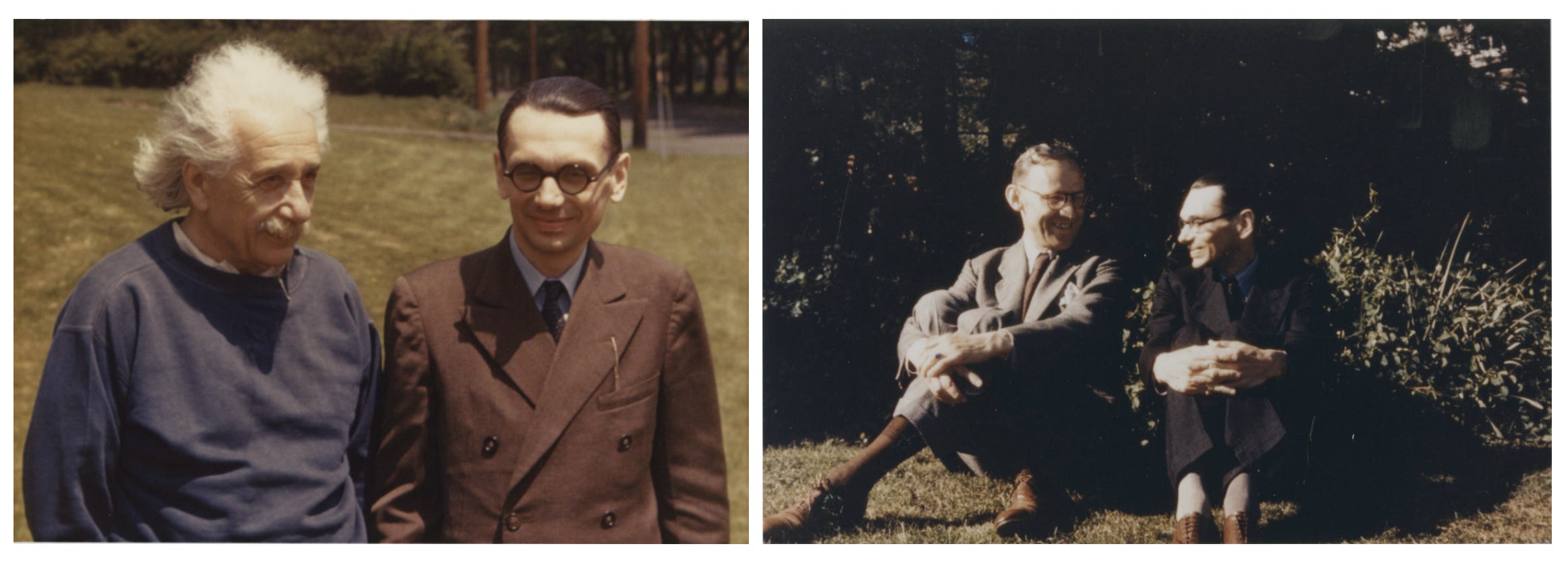
A “very thorough man” according to his close friend Morgenstern, Dr. Gödel spent the months leading up to this hearing “informing himself about the history of North America by human beings”. As Morgenstern later recalled, “He rather excitedly told me that in looking at the Constitution, to his distress, he had found some inner contradictions, and that he could show how in a perfectly legal manner it would be possible for somebody to become a dictator and set up a Fascist regime, never intended by those who drew up the Constitution.”
The detailed story about Gödel’s citizenship hearing and the ‘loophole’ he believed he had found in the United States Constitution is discussed in a separate newsletter, available here.
Gödel’s citizen certificate listed his height at 5'7" (170 cm) and his weight at 110 lbs (49 kg). Apart from a rather severe duodenal ulcer in 1951, Gödel enjoyed more or less good physical health for the rest of the 40s and early 50s. After being diagnosed with the ulcer, he began living on a diet consisting “principally of butter” (about a 1/4 lbs per day), in addition to three eggs, milk, puréed potatoes and baby food (Dawson, 2006). Mentally, he remained fixated with “bad air” and more imagined ails. When him and Adele vacation at the Jersey Shore in 1951, he insisted they move from the apartment they had rented to a hotel because the “night vapors” were “so bad that it completely counteracted the tonic effect of the sea air”.
Gödel was promoted to full professor at the Institute for Advanced Study on July the 1st, 1953. This following an ongoing campaign on his behalf by von Neumann and others, and resistance from various faculty members including Hermann Weyl (1885–1955) and Carl Ludwig Siegel (1896–1981) who worried that Gödel remained mentally unstable and would be unable to take on the administrative duties expected of faculty members (Dawson, 2006). On one occasion von Neumann is said to have protested:
“How can any of us be called professor when Gödel is not?”
Relationship with Albert Einstein
“I come to the Institute merely … to have the privilege of walking home with Gödel” — Albert Einstein
A great deal of attention has previously been given to the relationship between Albert Einstein (1879–1955) and Kurt Gödel, including several books (see Holt, 2018). This for good reason. By Gödel’s account, the two first met at the IAS in 1933 on the introduction of Paul Oppenheim (1885–1977). Rather far apart in age (Einstein was 54 and Gödel only 27 at the time), the two did not became well acquainted until nine years later, in 1942.
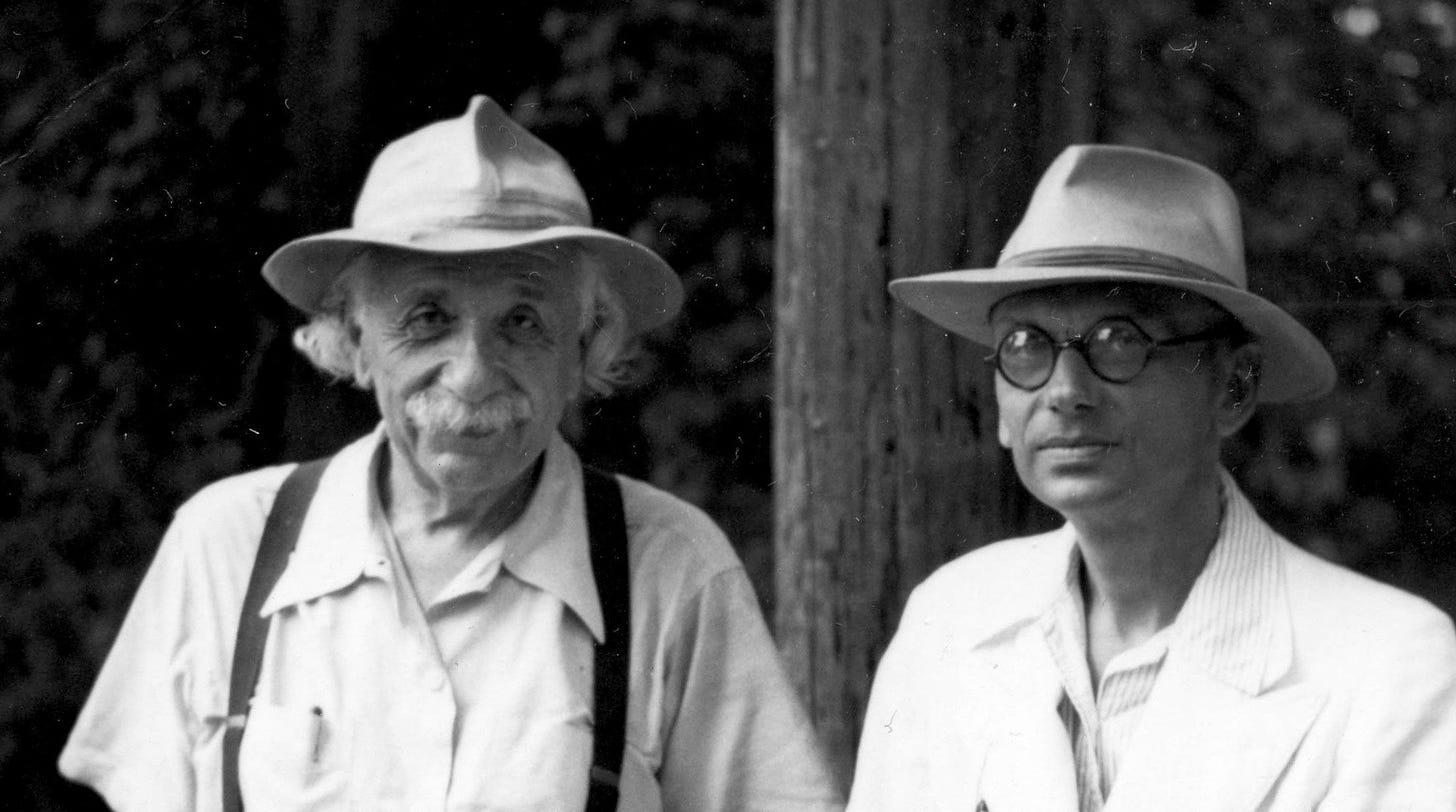
Biographers often point out their seemingly equal mutual attraction as puzzling. As Ernst Straus (1922–1983) is to have stated, Einstein and Gödel “were very different in almost every personal way”, the former being “gregarious, happy, full of laughter and common sense” and the Gödel “extremely solemn, very serious, quite solitary, and distrustful of common sense as a means of arriving at the truth”.
However, as should be pointed out, they both also came from similar backgrounds and grew up in similar environments in the samegeographical area surrounding the Alps. Gödel was from Vienna, but visited northern Italy on several occasions, as did Einstein when he worked in Zurich as a patent-clerk and at ETH. They also shared a similar caliber of intellect and both emerged as world class natural scientists as a consequence of their unexpected, original and exceedingly creative mathematical discoveries.
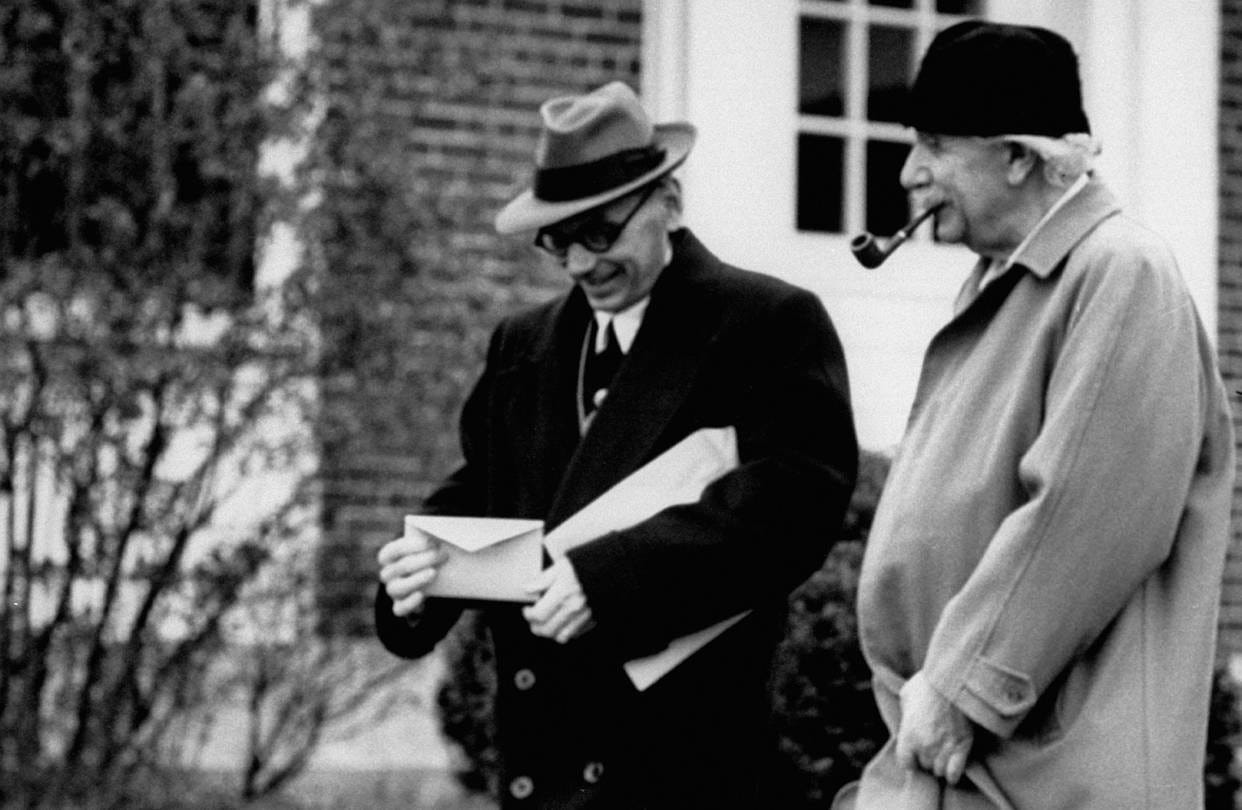
Dawson (2006) makes the case that Einstein also recognized Gödel’s need for someone to look after him, and that he was willing to serve as Gödel’s “protector” in the same way Veblen and von Neumann had done in the 1930s. Gödel himself stated to one of Einstein’s biographers that he thought Einstein “took pleasure in conversing with [him]” because he (Gödel) “frequently held an opinion counter to his and made no attempt to conceal [his] disagreement”. Inspired by his many walks with Einstein, Gödel in the 1940s developed an interest in physics, and for Einstein’s 70th birthday presented him with a proof of the existence of solutions of Einstein’s field equations involving “timelike curves” which theoretically could allow time travel to the past. His solutions later became known as the Gödel metric and are discussed extensively in the newsletter entitled “Gödel’s Solution to Einstein’s Field Equations”.
Following Einstein’s death in 1955 from an aneurysm, Gödel was left “shocked and disturbed”, having both his sleep and appetite affected. As biographer Rebecca Goldstein later wrote:
After Einstein’s death, Gödel’s sense of exile must have deepened enormously. When Einstein had been ordered by his doctor to take a rest cure, there had been nobody, as Gödel complained to his mother, for him to speak to. Now there would permanently be nobody.
von Neumann’s death would follow not long after (in 1957) followed by Veblen’s in 1960. Although he suffered from his usual “chronic malnutrition”, as Dawson writes, “there is little to suggest that Gödel’s physical condition was worse than usual” in the 1960s. He did for a time begin going for weekly sessions with his psychiatrist, and according to Morgenstern, wore an alarm wrist watch to remind him when to take his various medications, “carrying a box of baking soda around him in a pouch”. In July 1960, he wrote his mother to “thank her for the enema tubes she had given him” (Dawson, 2006).
Third Mental Breakdown (1970)
The year 1970 would — according to Gödel himself — be his worst since 1936. Morgenstern had begun expressing concern as early as in 1968, commenting on his emancipated appearance. “Never before, Morgenstern thought, had he looked so gaunt” (Dawson, 2006). Nonetheless, he continued working, at this time in logic, on an English revision of his so-called “Dialectica” paper:
- Gödel, K. (1958). Über eine bisher noch nicht benützte Erweiterung des finiten Standpunktes. Dialectica, pp. 280–287.
On January 23rd 1970, Morgenstern brought Gödel to the hospital, as he was convinced that he was suffering from both heart trouble and diabetes. What diagnosis he actually emerged with remains unclear. However, he was discharged a few days later and according to Morgenstern appeared “certainly better”, keeping in touch with him on the telephone daily, attempting to persuade him to eat more.
Four days later, Gödel began showing signs of psychosis. He claimed that his doctors were lying and that his medications were not correctly labeled, that even their descriptions in medical books were wrong. Worried that he was about to die, he asked Morgenstern to arrange for the posthumous publication of seven unpublished articles. Continuing to refuse to eat, he called Morgenstern on March 8th to declare that it felt as if he was under a “hypnotic spell” (Dawson, 2006), compelled to “do the opposite of what he knew to be right” and attributing his weakness not to his malnutrition but rather, to the “freedom he had enjoyed at the Institute”. Shocked by both his appearance and behavior, Morgenstern later said Gödel “looked like a living corps” and that he seemed to be suffering from hallucinations. He had suddenly taken up smoking, and spoke of little other than illness, stating that if “Morgenstern were a true friend, he would bring me cyanide”.
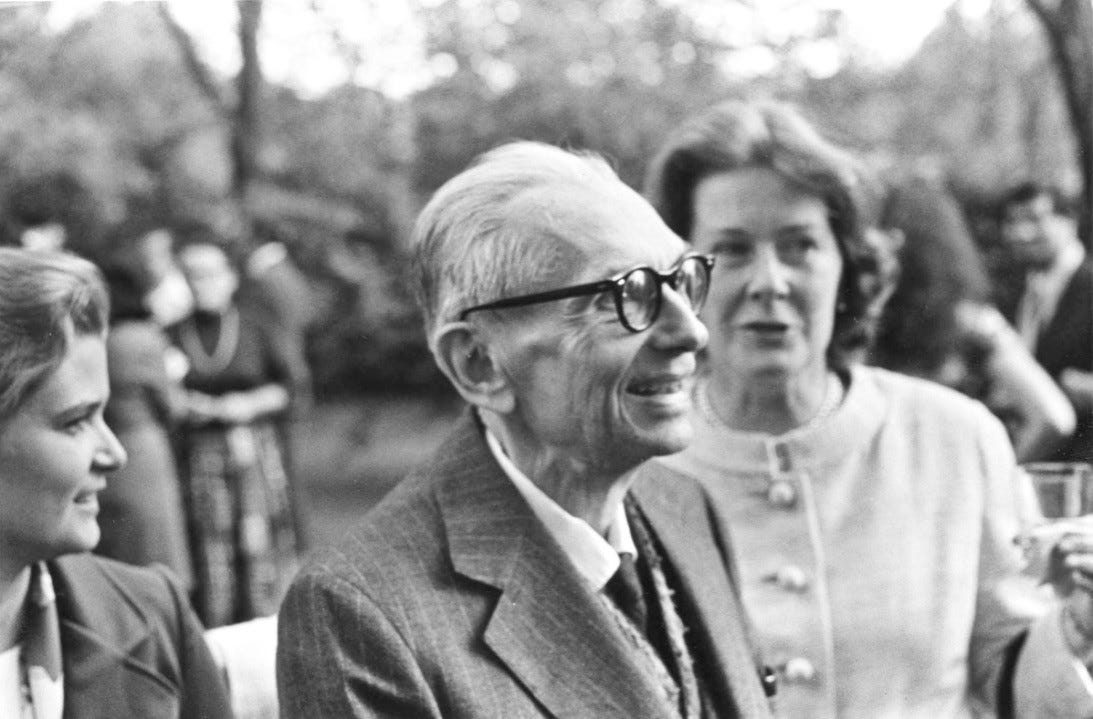
After visiting Gödel on March 13th, Morgenstern wrote to himself that he believed Gödel would not survive for long unless he was placed in an institution and fed intravenously. He was 64 years old at the time.
Death (1978)
However dire his situation appeared to Morgenstern in 1970, Gödel would live on for another eight years, until January 1978.
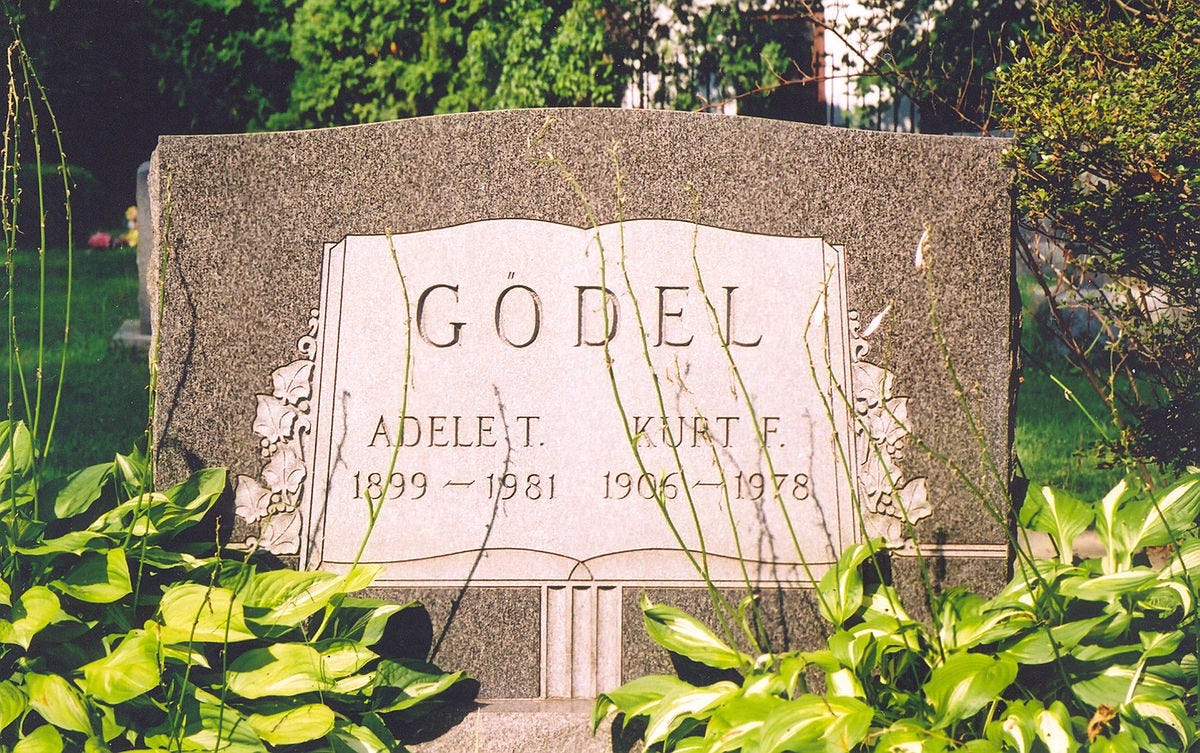
Late in 1975, Adele became gravely ill, leaving her bedridden and unable to cook and ensure that Gödel ate sufficiently. The two hired a nurse named Elizabeth Glinka to help care for Adele. She later testified that in his last years of life Gödel usually ate “only a single egg for breakfast, plus a teaspoon or two of tea and sometimes a little milk or orange juice. For lunch he generally had string beans, never meat”. When Glinka and Adele succeeded in convincing Gödel to eat carrots, Glinka described it as a “real breakthrough”.
As he ate less and less, his paranoia increased. By February 1976 he was calling Morgenstern two to three times per day, at all hours, to “express his fears of being committed, his worries about his catheter and his suspicions about his doctors”. By March he was again admitted to the hospital for malnutrition, weighing only 80 lbs (36kg). As his condition improved, he left the hospital without being discharged, walking home alone. At various times, he claimed that “the police were about to arrive”, and again asserted that his doctors (whom Morgenstern now served as intermediary with) were conspiring against him. Gödel retired from the Institute on July 1st 1976, having been promoted to emeritus professor. On July 10th, sixteen days before his own death, Morgenstern wrote the following in his diary about the condition of his friend:
Today [...] Kurt Gödel called me again [...] and spoke to me for about 15 minutes [...] He asserted that the doctors are not telling him the truth, that they do not want to deal with him, that he is in an emergency (exactly what he told me with the same words a few weeks ago, a few months ago, two years ago), and that I should help him get into the Princeton Hospital.
[...]
[He] also assured me that [...] perhaps two years ago [...] two men appeared who pretended to be doctors, [...] They were swindlers [who] were trying to get him in the hospital [...] and he [...] had great difficulty unmasking them.
[...]
It is hard to describe what such a conversation [...] means for me: here is one of the most brilliant men of our century, greatly attached to me [...] [who] is clearly mentally disturbed, suffering from some kind of paranoia, expecting help from me [...] and I [am] unable to extend it to him. Even while I was mobile and tried to help him [...] I was unable to accomplish anything [...] Now, by clinging to me --and he had nobody else, that is quite clear -- he adds to the burden I am carrying.
Gödel died in Princeton Hospital on January 14th 1978 of “malnutrition and inaniation” resulting from “personality disturbance”. At the time of his death, he weighed 65 lbs (29 kg).
As Dawson writes:
Gödel's demise was fraught with Pyrrhic irony: Unable to escape from the inner logic of his paranoia - to adopt, as it were, a "metatheoretical perspective" - he succumbed to starvation in the grip of his obsessive fear of being poisoned. Like the actions of an inhabitant in one of those timeless universes he had envisioned, his death was, and was not, of his own volition.
— Excerpt, Logical Dilemmas* by John W. Dawson (2006)
Those interested in reading more about the life and work of Kurt Gödel are encouraged to acquire Dawson’s supreme biography, from which most of this essay is sourced:
- Dawson, J.W. (2006). Logical Dilemmas: The Life and Work of Kurt Gödel*. CRC Press. Boca Raton, Florida.
Dawson’s first-hand investigation of Gödel’s so-called Nachlaß (his correspondences, drafts, notebooks, unpublished manuscripts, books, as well as loose notes and memoranda) — which was donated to the Institute for Advanced Study — provide unique insights which no other work (include my own) can hope to emulate.
Another, more recent book written for a wider audience is:
- Budiansky, S. 2021. Journey to the Edge of Reason. The Life of Kurt Gödel*. W.W. Norton & Company.
References
- Copeland, J. (2015). Computability. Turing, Gödel, Church and Beyond. The MIT Press.
- Dawson, J.W. (1984). Kurt Gödel in Sharper Focus.
- Dawson, J.W. (1998). Kurt Gödel and the Limits of Logic.
- Dawson, J.W. (2006). Logical Dilemmas: The Life and Work of Kurt Gödel. CRC Press. Boca Raton, Florida.
- Goldstein, R.N. (2005). Incompleteness: The Proof and Paradox of Kurt Gödel. W.W. Norton & Company.
- Graham, E. (2018). “Adventures in Fine Hall” in Princeton Alumni Weekly
- Holt, J. (2018). When Einstein Walked with Gödel. Farrar, Straus and Giroux.
- Menger, K. (1981). Recollections of Kurt Godel.
- Taussky-Todd, O. (1987). Gödel Remembered. Bibliopolis, Naples, Italy.
- Taussky-Todd, O. (1988). Remembrances of Kurt Gödel. http://vigeland.caltech.edu/ist4/lectures/Todd%20on%20Godel.pdf
- Sigmund, K. (2017). Exact Thinking in Demented Times*. Basic Books. New York.

